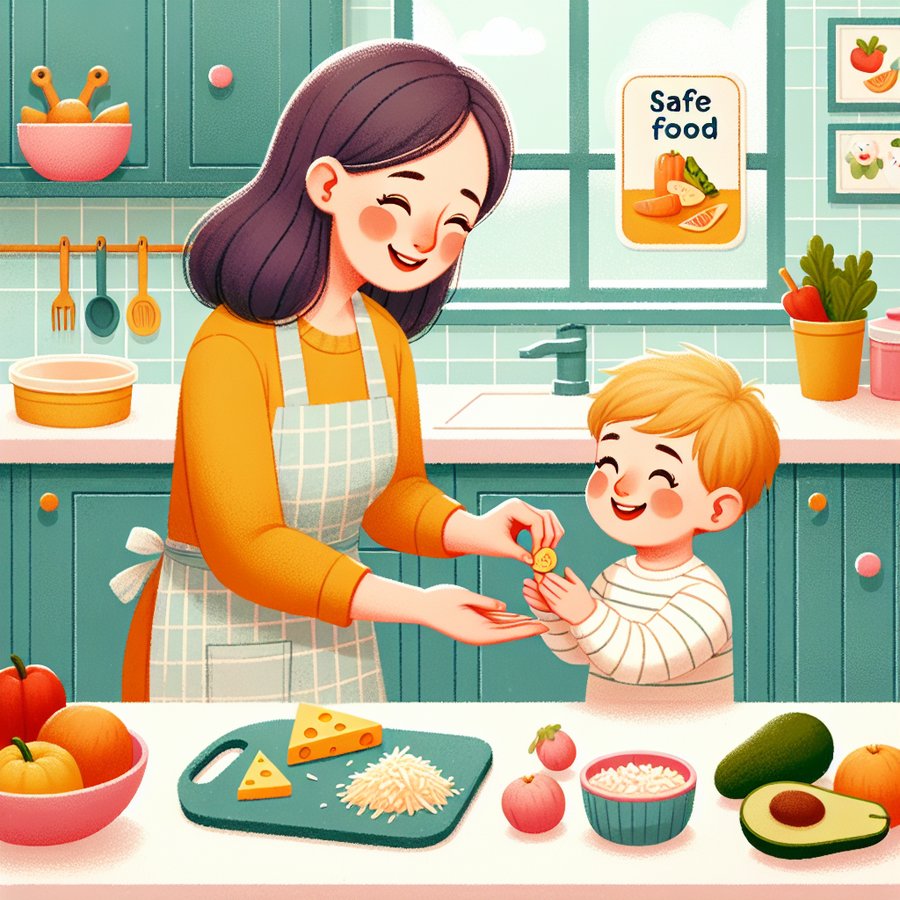Preventing choking hazards and ensuring the safety of food for infants and toddlers is a paramount concern for parents and caregivers. It’s crucial to understand which foods are suitable and how to properly prepare them to prevent any risks. This comprehensive guide will delve into the best practices for introducing solid foods, highlighting safe options and preparation techniques.
Understanding Choking Risks in Infants and Toddlers
Choking is a common risk for young children as they explore solid foods. Their small airways and developing chewing and swallowing skills make them particularly vulnerable. Recognizing the common household hazards and applying preventive measures is essential in creating a safe eating environment.
To mitigate risks, it’s imperative to introduce solid foods that are soft, easy to swallow, and appropriately sized. The American Academy of Pediatrics recommends starting solids around 6 months of age, ensuring that the child is developmentally ready. Monitoring closely during meal times and avoiding high-risk foods can significantly reduce choking incidents.
Preventing choking hazards: Safe foods for infants and toddlers
When it comes to preventing choking hazards, selecting safe foods and preparing them correctly is key. Soft fruits like bananas and cooked vegetables such as carrots and peas are excellent choices. Make sure to cut them into small, manageable pieces that won’t pose a risk. Whole grapes, nuts, and hard candies should be avoided due to their choking potential.
Grains and soft-cooked legumes can also be included in your child’s diet. Preparing these foods in a manner that makes them easy to gum and swallow can help in preventing choking hazards while providing essential nutrients. For more detailed guidance on safe foods and preparation techniques, visiting expert resources can be beneficial.
Proper Food Preparation Techniques
Proper food preparation plays a vital role in preventing choking hazards for infants and toddlers. Foods should be cooked until they are soft enough to be easily mashed with gentle pressure. For example, apples should be steamed or baked to a soft consistency before being offered. Utilizing a food processor or masher can help achieve the right texture for safe consumption.
Beyond preparation, it’s also important to focus on how food is presented. Serving food in small, bite-sized pieces or thin strips can make it easier for children to handle and chew. Encouraging your child to eat slowly and chew thoroughly is another crucial aspect of safe eating practices. For further guidance on meal preparation and safety tips, refer to first aid skills every parent should know.
In conclusion, preventing choking hazards by choosing safe foods for infants and toddlers requires awareness, correct food selection, and preparation techniques. By following these guidelines, caregivers can create a safe, enjoyable, and nutritious eating experience for their little ones. Always stay informed and consult healthcare professionals for personalized advice catered to your child’s specific needs.













